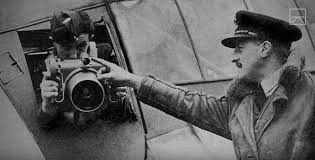Overall, photojournalism is the process of storytelling, using photography as your main story telling device. While a journalist will use their pen and paper to tell stories, a photojournalist will use only their camera to capture the visual representation of an overall story. It usually only refers to still images, but it can also refer to video used in broadcast journalism. This also calls for photographs with several edits and displays in order to tell a strong visual story. Photojournalists are journalistic professionals that are skilled at interpreting and communicating any type of event through only photographs.
Now, War is an intense and highly covered news topic, especially when breaking news occurs. Many journalists decided to start using photos and videos during their broadcasts and reports on Wars because they believed it would be the best way to capture and show the whole world the full and devastating reality of what is going on. Words can sometimes not do as much justice as a picture representation would on an event, especially War.
War photography involves photographing armed conflict and its astonishing effects on people and places. Photographers who participate in this genre of reporting may find themselves placed in harm's way, and are sometimes killed trying to get their pictures out of the war area. The mass-reproduced images of war were not only used to inform the public, but they also served as imprints of the time and as historical recordings. Mass-produced images did have consequences in the long term though.
World War I was the very start of photojournalism playing a significant part in the reporting of War through the media. From soldiers on the ground recording their experiences, to army officials trying to capture their moments, and to airplanes that took aerial images to assist in ground attacks and possible air raids, this type of photography played a very important role in WWI. The photographs taken by the official war photographers became tools of propaganda, offering civilians at home a view at the war, while protecting them from the horrors, including death.
The propaganda photographs offered a full censored memory of the War for those who did not actually have to face the terrifying dangers of the 'front line'. The timing of it, however, allowed for WWI to be the first ever time that photography would be used to bring home captured memories from battle.





Comments
Post a Comment